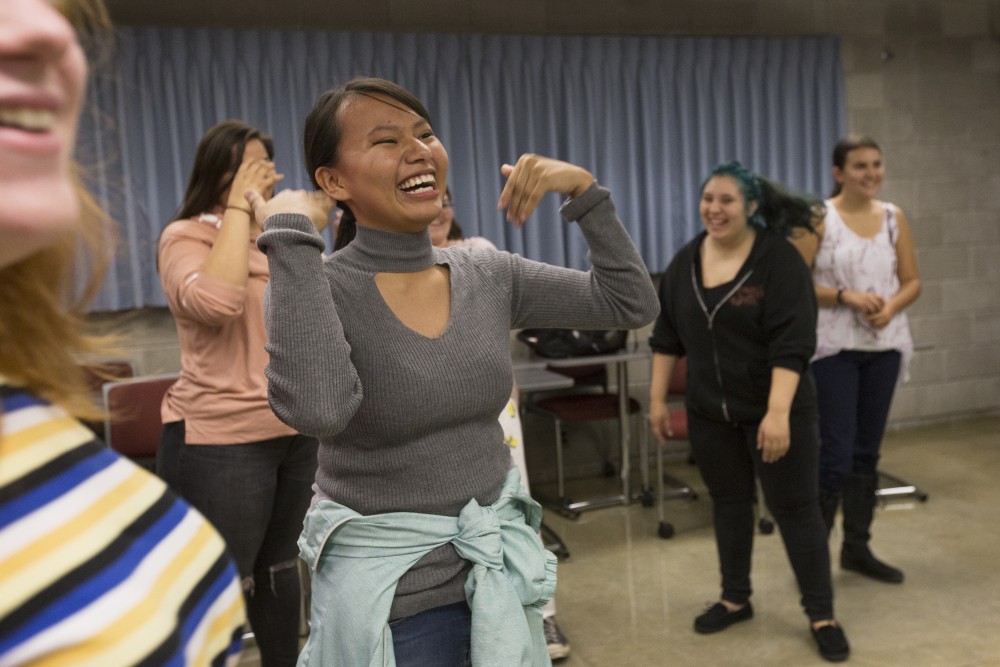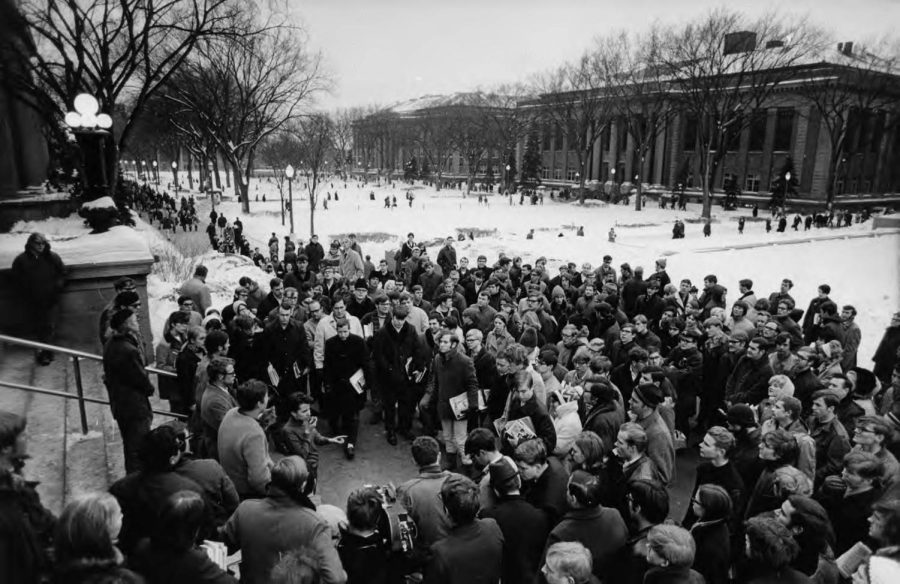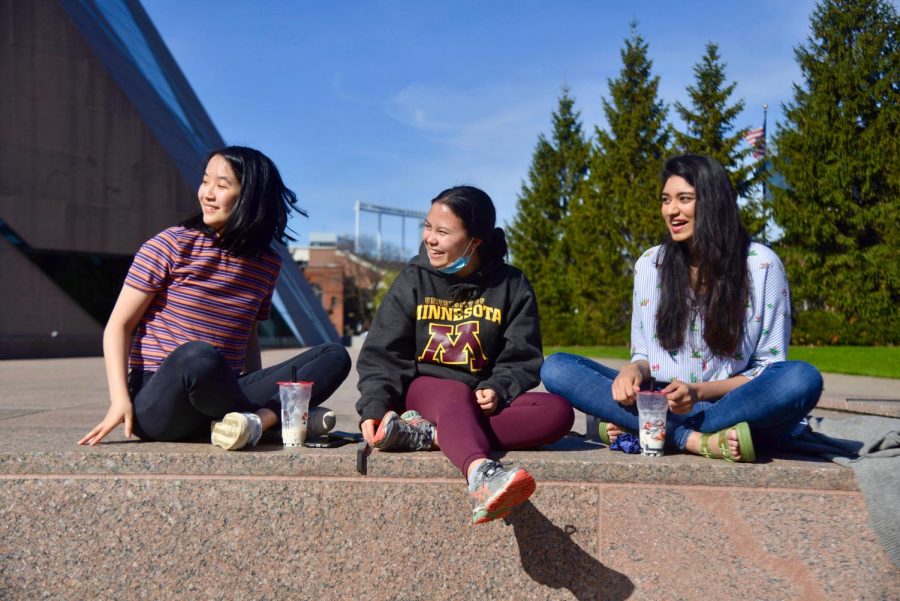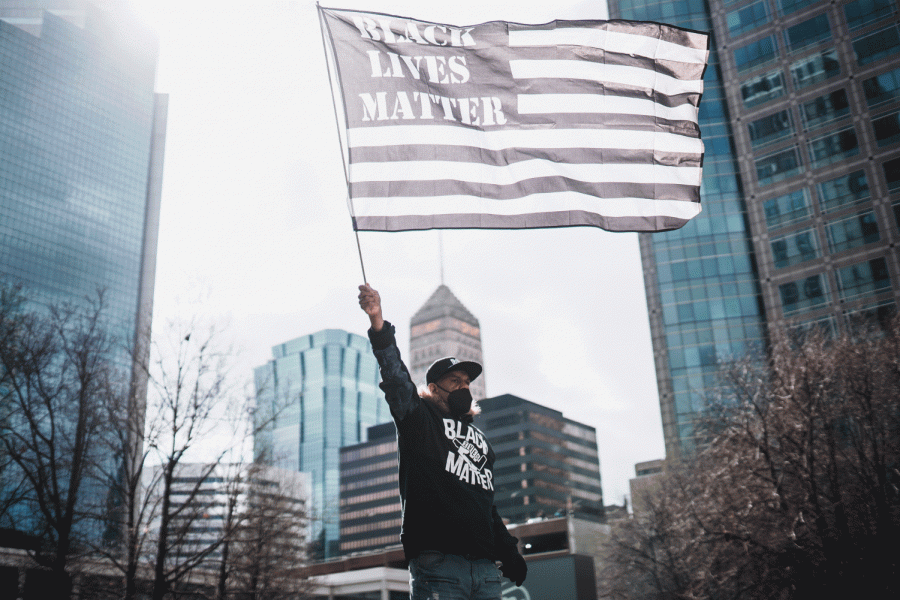On the west side of the University of Minnesota-Morris campus stands an Anishinaabe grandmother, shrouded in a sacred blanket and embraced by two grandchildren.
The sculpture, unveiled late last month by artist Duane Goodwin, is the newest addition to the University’s collection of programs and policies acknowledging its origins as a boarding school for Native American youth.
One of the earliest policies to address this history was Morris’s full tuition waiver for Native American students.
The policy, which is still in effect today, helps determine Native American student enrollment at the University, which has been slowly rising over the years.
In 2018, around 20 percent of the University’s Morris campus student population identified as American Indian – a number that dwarfs other University of Minnesota system campuses, where Native American students make up less than 2.5 percent of the student population at each.

Century-old roots

The boarding school on the Morris campus first opened in 1887. It was later operated by the U.S. Bureau of Indian Affairs as the Morris Industrial School for American Indians from 1896 to 1909 — one of many government-supported boarding schools around the country.
When the U.S. Congress transferred the boarding school land to the Minnesota government, it ordered that “Indian pupils be admitted free of charge for tuition,” according to the waiver that solidified this agreement in 1960.
Among many of its activities, the school used assimilation to separate young students from their families, communities and cultures.
Sandra Olson-Loy, Morris’s Vice Chancellor of Student Affairs, said the boarding schools inflicted an intergenerational trauma that communities are still healing from today.
Today, the waiver admits students free of tuition who can demonstrate a connection to a federally recognized Native American tribe in the continental United States, Alaska or Canada.

Gabe Desrosiers, a Morris alumnus and professor of Native American and Indigenous Studies at the campus, said programs supporting the school’s Native American community help Morris become a haven for Native American students.
“The school is trying to work towards a kind of reconciliation … to have a better relationship not only with Native students, but also with the Native communities out there — to try to invite them with open arms and have inclusion all in the name of the success of Native students,” Desrosiers said.
Years later, a growing community
Within the last two decades, the number of Native American students across the University has been slowly increasing.
Past and present Morris students say this growth, which is tied to the tuition waiver, helps create a community that’s hard to find elsewhere.
As of fall 2017, Native American student enrollment at Morris has climbed from about 17.6 to 20.6 percent since 2014, according to the UMN-Morris Institutional Data Book.
In 2000, that number was about 6 percent.
This gradual growth is likely connected to the tuition waiver, which has become more important as tuition rates rise across the country, Olson-Loy said.
“[There’s] the value of the waiver and the quality of education — coupled with an understanding in communities that [Morris] is a place where Native students are successful,” Olson-Loy said.
Jill Doerfler, an American Indian Studies professor at UMN-Duluth who used the tuition waiver when she attended Morris, said she thinks Morris’s reputation for having a strong American Indian community attracts students just as much as the waiver.
“Sometimes students in a reservation community have never been in an environment where they’re the only Native student,” Doerfler said. “That can be a very isolating feeling. Where the population is more diverse, you don’t feel so isolated.”
Morris also hosts organized events and programs for community building, like annual powwows and an Elder in Residence program.

The University is within 150 miles of six Native communities, Olson-Loy said.
Sasha Suarez, a UMN-Morris alumna and graduate student at UMN-Twin Cities, said although it took her almost a year to adjust to living in a larger Native community at Morris, it ultimately became vital to her academic success.
“Without the Native student population, I think I would have struggled a lot more [at college],” Suarez said. “[Without the community] I probably wouldn’t have finished.”
Future outlook informed by the past
Though Morris’s tuition waiver contributes to community on campus, some students say it doesn’t go quite far enough.
Students and faculty say the tuition waiver doesn’t remove all institutional and communal hurdles Native American students face, in part because the waiver is uniquely available to Morris students and the waiver can’t ensure non-Native American students know its history.
Charles Golding, a board member of the American Indian Student Cultural Center and second-year student at UMN-Twin Cities, said the tuition waiver should also be applied to the Twin Cities campus, though his opinions haven’t been formally adopted by the AISCC.
Making the waiver available for Twin Cities students could improve its enrollment numbers for American Indian students, Golding said, but most importantly, it would address the Twin Cities campus’ history.
Many students don’t realize the Twin Cities campus is built on unceded Dakota land, despite the availability of literature on this history.
Suarez said with a strong Native community on the Morris campus, issues often arise because the white majority on campus often doesn’t know as much about the school’s Native origins as the Native students.
“[The lack of education] isn’t for a lack of information,” Suarez said. “I think it’s just for a lack of people looking into archival sources.”

This lack of understanding causes “layers” of tension between Native and non-Native students that are visible when non-Native students assume Native students attend school “for free,” Suarez said.
“I think it’s not only the University’s job to have that information [on the Native origins of the University] out there, but also partly part of the student population’s job to be receptive to that history,” Golding said.
These tensions won’t be undone by programs like the tuition waiver alone, he said.
“[Native-oriented programs] are nice steps in the right direction, but I don’t believe that recognition of the history should end with American Indian students,” Golding said.














